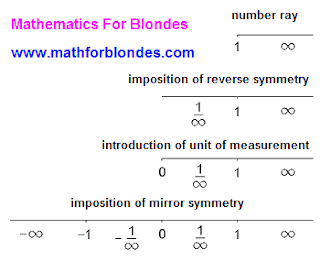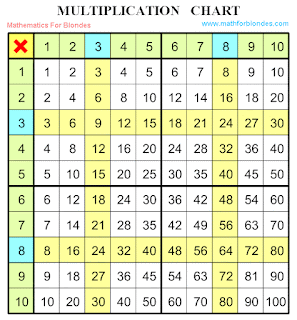All distinctions between two numbers or two units of measurements come to light only at comparison of two numbers or two units of measurements. All results of comparison are relative, as depend on what from two elements takes up basis at comparison. Relativity of results of comparison is represented different kind by symmetries. If up basis of symmetry a point takes "zero", then mirror symmetry ensues. If up basis of symmetry a point takes "unit" - reverse symmetry ensues. For units of measurements of corners reverse symmetry is transformed in perpendicular symmetry that is possessed by the values of trigonometric functions.
All distinctions between two numbers or two units come to light only at comparison of two numbers or two units. All results Comparison of two any numbers is not possible without the presence of the general founding unit comes forward as that. For the location of any numbers in order of growth in modern mathematics as unit of numbers the number systems are used: binary, ternary, octal, decimal, sexadecimal et al. Comparing of two numbers to the different grounds is not possible without bringing them over to the general founding.
Comparison of two numbers at different units of measurements becomes possible at the use of the third unit of measurement - one of the number systems, for example, decimal.
Result of comparison of two numbers is described by concepts "greater than" and "less than". Relativity of comparison of numbers is expressed in that the result of comparison depends on that, what number takes up basis at comparison. For example, if to compare numbers
2 and
3, we will get two results:
2 less than 3
3 greater than 2
On the first place it is accepted to write down a number that takes up basis at comparison, on the second is a that number it is compared to that. The results of comparison possess property of mirror symmetry - at the change of founding a result changes on opposite. The point of mirror symmetry is equality of two compared numbers. The results of comparison of two numbers are analogical to the relative system of coordinates:
less than - equal - greater than
minus - zero - plus
Comparison of two units of measurements is possible at presence of general point "zero". The result of comparison of two different units of measurements can be a conclusion about perpendicularity or parallelism of these units of measurements. Parallelism or perpendicularity of one unit of measurement in relation to other is concepts relative.
Expl for blondes: we will examine farther, as well as where a Number line appeared from. More interesting things on the page "New Math".
















